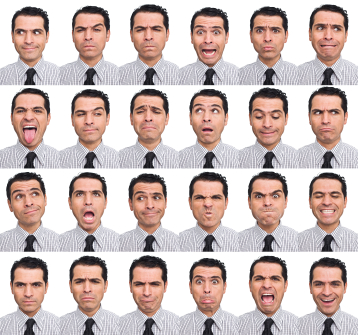 Because I'm teaching a course called "Keeping the Emotions in Check" later this month,
Because I'm teaching a course called "Keeping the Emotions in Check" later this month, I'm very interested in what's going on out there on this topic. In fact, after reading a lot of what's out there, I can tell you that the content I deliver will provide more perspective than the title of my course suggests, and will go beyond what many recommend as "control."
The course is aimed at folks struggling with, or interested in, ways of regulating and managing emotions in the workplace. You might guess that the no one would enroll in a course like this if everything were working out for them on all fronts without a hitch—emotional challenges are alive and well wherever we earn our living.
The natural reaction to things not working so well on the emotional front, is to "take more action" and "exert more control." True, some emotional situations call for immediate action and control, and even special training to handle. But the vast majority of emotions in the workplace are best treated long before they reach a crises point—or even an uncomfortable point.
I believe that thinking in terms of "taming" and "controlling" emotions is an approach that is mostly necessary and applicable when we don't have an overall emotional strategy.
What is an "emotional strategy"?
An emotional strategy is a healthy practice of, or approach to, recognizing, listening to, and following our emotions to the information that they are trying to alert us to. It's a proactive approach to working with one's emotions.
Sometimes emotions may FEEL like they control us. Indeed, they may surge to overwhelming levels at times. But usually that feeling of pressure needing to boil off is a direct result of ignoring or habitually repressing much smaller levels of emotion—and the inner guidance that comes along with these signals.
For example, if we are following the "message" of our emotions to what is adding stress in our lives, and we do something about that stress on a regular basis, our "bucket" of stress might not get so full that another "drop" of stress from a fellow employee or project tips it over.
Another example is how anger might be calling us to *empathy* (which works miraculously to ease anger), or to expand our thinking to include the diversity of a co-worker's approach. By introducing these ideas, and cultivating both empathy, and an appreciation for diversity, we effectively ease or even eliminate many causes of anger before it manifests. This approach is one example of a proactive alternative to repressing, or trying to divert anger at the last minute.
With patience and alertness regarding our emotions, and with respect for our emotional nature, and the emotional nature of others, we can tap into valuable guidance and alert ourselves to limiting beliefs, limiting habitual thought, misalignment of beliefs with desires, and more.
Moreover, when we have a habit of appropriate expression of emotions, and we give our emotions their due, they are less likely to reach such a pressure point that an explosive relief is necessary.
Of course, a complete emotional strategy may include times when we purposely charge up our emotional engines for a benign or expansive experience. As long as this is conscious and with positive intent, it is a valid approach, I feel.
Overall, I believe that in spite of the occasional need for withholding or regulating our full emotional energy, it is more productive and healthy to see our emotions as our friends and allies, than something that needs taming. I like to think our real work is about what the emotions are telling us about the new choices we can make.
If your interested in attending Keeping the Emotions in Check, please contact Capital Community College in Hartford, Connecticut.
Tags: Emotional Intelligence, Emotions in the Workplace, Controlling Emotions, EQ


